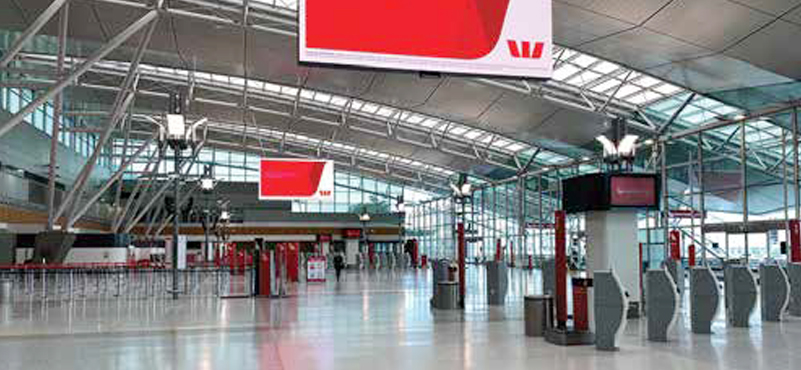Till late last year, the perception about Spice Jet was: after Kingfisher, it will be second major belly up casualty in the Indian aviation space. But in a dramatic turn of events, the original founder of the airline Ajay Singh got into the cockpit to save the airline and the recent months’ performance have triggered the hope that the airline has been diverted from the disaster route. The airline has reported better than industry average on the critical load factor parameter and has also delivered two straight profitable quarters. According to Ajay Singh, the recovery course of the airline has exceeded their own expectations and the new management is confident to regain the position of prominence which the airline used to enjoy in the market not too long ago. TourismFirst caught up with Ajay Singh on the sidelines of a recent seminar in Delhi. Here are the excerpts of a brief conversation:
We do understand the enormity of the challenge you are facing right now. Before you stepped in, market observers had this feeling that Spice Jet will go Kingfisher way. But you took back your baby in your lap about six months ago and in all fairness, some of the recent developments point out that you have managed to put in place a concrete revival course for the airline. So how would you explain the past six months? Has the recovery been better than what you had expected?
Quite honestly, it has been better than what we had expected. We were faced with very difficult situation when we had taken over. And there was a great crisis of confidence not only within the company but also in the entire aviation sector particularly because of the collapse of Kingfisher. Considering the scenario, we have managed to achieve significant progress. Load factors have been high, we have earned profits in past quarters and have managed to pretty much sort out a lot of liabilities and other operational issues. Most importantly, we have got consumer confidence back in the airline.
Tell me the key concerns you had when you began this restoration drive after taking over the airline?
To restore the confidence of the passengers in the airline was a vital challenge because they had suffered a lot of cancellations in the past. Restoring credibility with lessors and the government – that was the largest task for us. And then trying to ensure that operations remain stable.
There have been indications from Spice Jet quarters in the recent weeks that after stabilising your operations, you are looking for a massive expansion in fleet considering your long-term plans. Have you firmed up your plans? Can you share some details on it – which manufacturers you are talking to presently?
We remain in discussion with manufacturers and as soon as we firm up something, it will be conveyed. Let me specify, we have not discussed any specific number but we expect the aircraft numbers would be sizeable.
What happens to the delivery of 55 Boeing Max which was finalised by your predecessor? Will there be any change in the plan?
We will take a call on that after we have decided on the size of the order and the manufacturer.
How would you term the negotiations which you are having with manufacturers – advanced, preliminary?
The negotiations have been on for a while. And we expect to conclude these negotiations in the present financial year and place the orders.
Indigo and Spice Jet were seen as close rivals at one point in time till Spice Jet’s decline happened. Now Indigo has put a mega order of 250 aircrafts and the sense is that it will give them the handle to dominate the market for a long time on the basis of their sheer fleet size. Will this factor influence your own decision when you place the order before the end of this fiscal?
We have a massive market in India. Less than 2 percent people are flying and, therefore, there is a great potential. I think the market needs competition and it needs multiple players. While the rival airline you referred to has done extremely well, I think there is enough space for Spice Jet to succeed in the market.
The Prime Minister has expressed concerns on the predatory airfares regime in the country. Spice Jet, itself has indulged in several flash sales in the recent months. How would you respond to it?
The available data is quite clear on this. A study was conducted by the DGCA on the airfare trends a short while ago. And they have found that on an average, the airfares have gone down by 20 percent from last year. So I don’t think there have been predatory fare trends in the marketplace. Of course, on certain occasions when the flights are full, the fares can go up and they can be very high. But on the flip side, there are also fares which are extremely low. You mentioned the promotional schemes that Spice Jet has pioneered and those are being adopted by every other airline. You have fares in the bracket of 999, 1299 or 1499. As I said, airfares have come down by 20 percent and it is actually the stimulation which has been brought about by these low airfares which is resulting in the current growth in the Indian aviation market.
As your revival drive picks up further momentum, the winter schedule is slated to be very critical for you. How the scene will pan out for you in terms of catering to the increased demand which comes with the season?
We are getting five more aircrafts for the winter period. These are Boeing aircrafts and we are open to get more aircrafts if we feel the need to substantially enhance our capacity. With the new aircrafts we will be introducing 40 more flights – both on the domestic as well as international routes.
You are indicating a major order placed before the end of the fiscal. How do you intend to fund them?
As soon as we finalise the plan, we will let you know. But let me assure you, there is no paucity of fund available to Spice Jet. We are on a strong recovery path and we have a whole range of options available including strategic investments.
You seem to have relied too heavily in promotional sales in the recent months. How have they worked for you?
In last four months, our average load factor has consistently gone up. It has been highest in the industry – it was over 92 percent last month. And this has happened in a season which is not considered peak for the aviation business. It has been beneficial for both the passengers as well as the airline. We will stick with this strategy. It is important for the LCCs to stimulate the market with low air fares. It also helps in getting some passengers from railways.
Finally, how much time you reckon it will take you to get back to the peak days of Spice Jet?
If by peak days, you mean the number of flights and number of aircrafts, that will depend on how the market shapes up. But in terms of profitability, the Q4 of last year which was the first three months of our takeover of the airline, Spice Jet became profitable for the first time after five years. It was in 2010 that the airline had witnessed a profitable quarter. In Q1 this financial year, the scene improved further with Spice Jet recording highest profit in its history. In that sense, we are getting back on track pretty quickly.




































